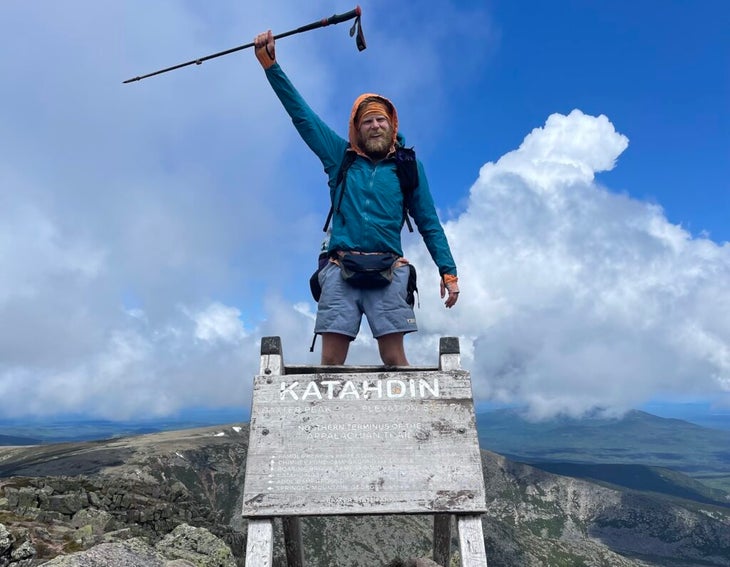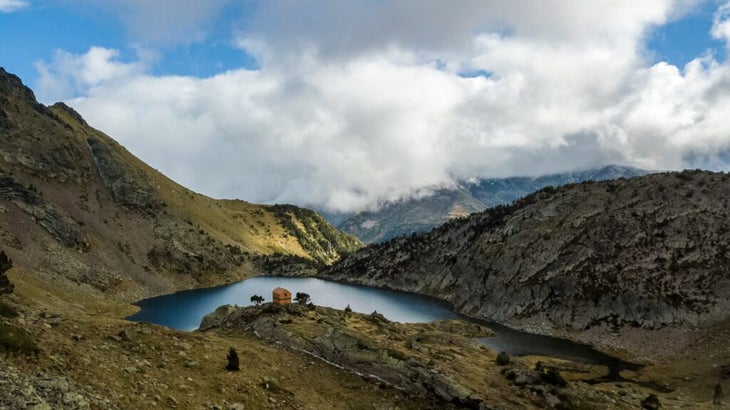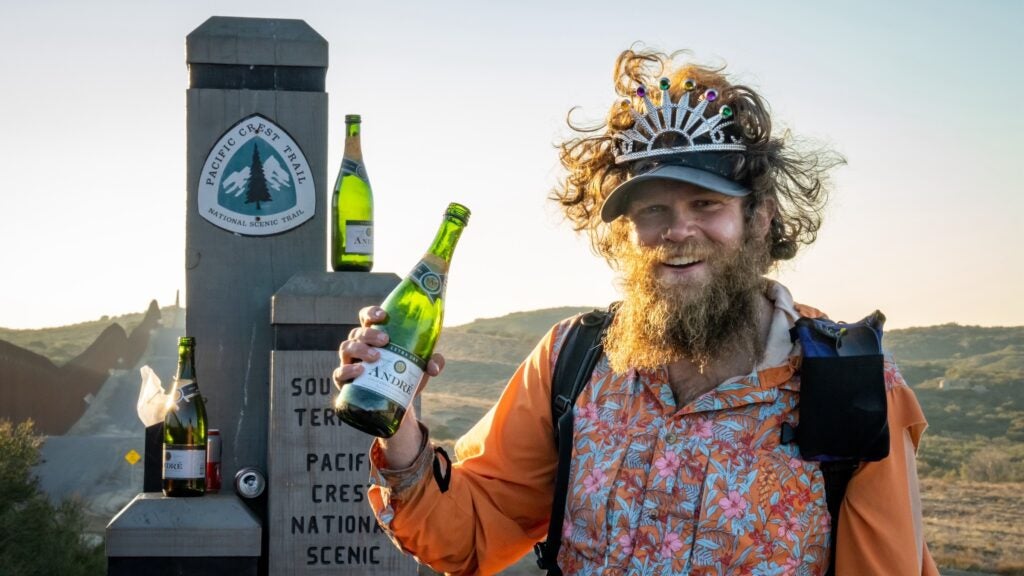“], “filter”: { “nextExceptions”: “img, blockquote, div”, “nextContainsExceptions”: “img, blockquote, a.btn, a.o-button”} }”>
Heading out the door? Read this article on the new Outside+ app available now on iOS devices for members!
>”,”name”:”in-content-cta”,”type”:”link”}}”>Download the app.
If you’re reading Backpacker, you’ve probably dreamed about living The Hiker Life. You know: Dropping everything, grabbing your boots and pack, and leaving the trappings of society behind. If that sounds like a pipe dream, consider that there are dozens of people across the country who succeed in making it work. Hiking full-time (i.e., at least six to nine months out of the year), takes some serious stamina, but that’s not all. A large part of making it work is coming up with a plan to fund your travels. (By some estimates, thru-hiking costs about $2 per mile, or $1,200 per month.)
Earning that kind of cash isn’t easy. But here’s the good news: Plenty of thru-hikers have blazed a path to living that reality, and they’re happy to share their secrets.
Carl “Professor” Stanfield: The Opportunist
Carl Stanfield, trail name “Professor,” has hiked 16,000 miles by his count since he first set foot on the Appalachian Trail in 2018. He’s completed the AT, Pacific Crest Trail, and Continental Divide Trail, among myriad other long-trail excursions. In 2022 he embarked on a mind-boggling 8,400-mile year that included a calendar-year Triple Crown as well as the Florida Trail and the 335-mile Pinhoti Trail.
Stanfield mostly funds his hikes with the time-honored strategy of seasonal work, but takes an opportunistic approach to making money—basically taking any gig he can get in the towns he ends up in. Last year, he worked at a fish-processing facility in Alaska to get a quick cash infusion before he headed into the woods. Before that, he’d pick up winter jobs bartending or working at gear shops between stints of thru-hiking. When one store offered him a management opportunity in Birmingham, Alabama, he jumped at it, looking to make a little more money before setting off on his next round of travels. As someone who had plenty of wilderness knowledge, the role made sense. And the best part? His employer let him leave after a year to hike the CDT, as long as he resumed the role afterward.
“[I’ve found] jobs that fit the experience I’ve gotten on trail, and people have been flexible and have wanted to support what I’m doing,” Stanfield told me. When I talked to him, he was taking a spare moment from his current gig, working at the Appalachian Trail Hostel and Outfitters in Millinocket, Maine. He’ll stay there for the summer months, running shuttles for AT hikers to and from Katahdin, making food drops, and teaching long-trail prep workshops. In the fall, he’ll head out to do the northern half of the Arizona Trail with his girlfriend and then hit the AT again, this time southbound, in the spring.
“I’m refilling my bank account so I can get out and hike, while also still being in the hiker community while doing that,” Stanfield said. He prefers to make enough at each stop to get him through the following hiking season, with a little financial padding for peace of mind. (During recent hikes, he’s also tapped into some on-trail cash flow through a few new gear sponsorships. They’re small, but every cent helps.)

Steve “Twinkle” Shattuck: The Seasonal Accountant
Steve Shattuck, the Director of Operations for the Continental Divide Trail Coalition, takes a less omnivorous approach to job seeking. Shattuck—aka “Twinkle”—managed to pull off shorter thru-hikes in college, including the Colorado Trail, Long Trail, and the John Muir Trail (twice). In between, he got a degree that would continue to support the dream: He went to school for accounting and became a Certified Public Accountant (CPA).
As a CPA at a multinational accounting firm, Shattuck was able to help conduct public audits during the firm’s busy season—roughly November to April. During the summers, though, he was off the hook to hit the trail. Shattuck hiked the Triple Crown over two seasons, in 2014 and 2015. Although he walked thousands of miles during that time, there’s no gap in his career résumé.
“I chose where I wanted to start my career within accounting based on the fact that I knew I wanted to thru-hike,” Shattuck said. He also knew he’d have to put in at least a couple of years at the firm before he was allowed to go on sabbatical, but targeting that goal allowed him to become a Triple Crowner with no financial stress.
That doesn’t mean life split between work and the trail was a breeze, though. “The hardest part was just being in busy season the entire time I worked,” Shattuck told me. “The jolt of having nothing to do all day but walk, [and then] going into a busy season where you might be working 70 hours a week right after getting back—that always took a bit getting used to.”
After he finished the Triple Crown, Shattuck and his wife turned their attention to another outdoor goal: taking a full year off to thru-hike wherever they wanted. “We saved pretty aggressively for three years,” he recalled. “We lived as cheaply as we could, had roommates, didn’t have car payments, didn’t go out much.” The results speak for themselves; in 2018 Shattuck and his wife hiked the Hayduke Trail, trekked across Scotland, and traversed the Atlas Mountains in Africa and the Pyrenees in Europe. Legs no longer restless, they returned to the States and now work full-time, shifting their outdoor focus to canyoneering and packrafting.

Ethan Andrew “Sochi” Gehl: The Wilderness Therapist
Ethan Andrew Gehl, known to his trail family as “Sochi,” may not be a Triple Crowner, but his hiking goals have been equally ambitious: A few years ago, he set out to hike “10,000 of the prettiest miles I could find” and succeeded. Over the past 10 years, he’s knocked off the PCT, Pacific Northwest Trail, Hayduke Trail, Pyrenees High Route, and the South Island portion of New Zealand’s Te Araroa. (He also just returned from a month of hiking in Norway with Shattuck and his wife.)
My phone call found Gehl in Leadville, Colorado, waiting on a repair to his Toyota 4Runner, which he lives out of. “Figure out what’s important to you,” he told me when I asked if he had any advice for prospective full-time hikers. “For me it’s freedom, autonomy, and financial security.”
Gehl seems to have nailed that troika. By his count, he’s paid a total of 12 months of rent since 2008 (when he graduated college), and has saved—conservatively—$144,000 over that time by living in his truck. “It’s not for everybody, but it’s for me,” he said. “It’s given me a ton of flexibility and allowed a ton of financial stability.”
Job-wise, Gehl lands somewhere between Stanfield’s season-by-season approach and Shattuck’s planned-out career path. His main gig is working in wilderness therapy, an industry he’s been in since 2014. Gehl pursues short-term contract work within the industry—anywhere from a few weeks to several months at a time. That provides funding for his hikes but also lets him pick and choose his schedule. Because he’s performed a wide variety of wilderness therapy-related roles, he can decide when and where he works. “I fill in work around travel,” he said.
Gehl also possesses a thru-hiker’s penchant for improvisation. He spent the past two off-seasons working in Antarctica, shuttling passengers to and from an airstrip to McMurdo Station and loading cargo. He heard about the opportunity from a fellow hiker on the PCT, and managed to score a seven-month seasonal job that was an adventure in and of itself.
After he returned from Antarctica this year, Gehl hopped around Utah for the month of May—not a bad time to be bumming around the desert. He spent the time canyoneering, bikepacking, and trail running.
If that sounds like a pretty good itinerary to you, consider the approaches these three trail aficionados took, and heed this advice from Carl Stanfield: “Know that this is something you want. If you want it badly enough, you can make it happen.”
